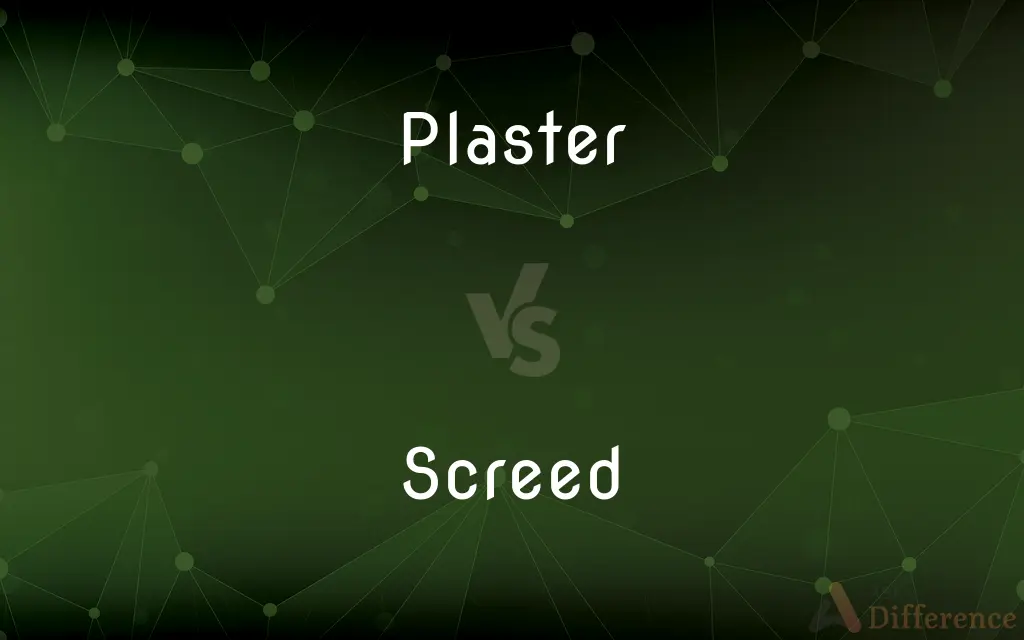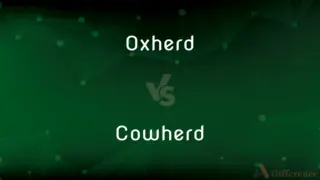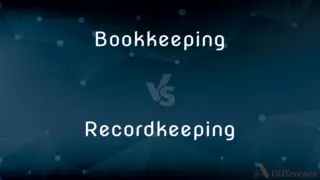Plaster vs. Screed — What's the Difference?
By Fiza Rafique & Urooj Arif — Updated on March 28, 2024
Plaster is used for coating walls and ceilings for a smooth or textured finish, while screed is a level layer of material applied to a floor base.

Difference Between Plaster and Screed
Table of Contents
ADVERTISEMENT
Key Differences
Plaster is primarily used on interior walls and ceilings to provide either a smooth or textured decorative finish. It can also serve functional purposes, such as fireproofing or soundproofing in buildings. Plasterwork involves the application of plaster materials over surfaces to create a desirable aesthetic or functional coating. On the other hand, screed is applied to create a smooth, level surface on a floor base before the final floor covering is laid. Screed is often used to encase underfloor heating pipes or to level a floor; it's a crucial step in ensuring the longevity and performance of the floor finish.
While plaster is applied to vertical surfaces like walls and ceilings, screed is exclusively used for horizontal surfaces, specifically floors. This fundamental difference dictates the materials' composition, application techniques, and tools required for each task. For example, plaster needs to have a consistency that allows it to stick to vertical surfaces without slumping, whereas screed is designed to be more fluid for easy leveling but quick setting to form a solid, durable floor base.
The composition of plaster and screed also differs; plaster often consists of materials like gypsum, lime, or cement mixed with water and sometimes additives to improve workability or drying time. Screed, however, is typically made from a mixture of sand and cement, and sometimes fine aggregates, to achieve a specific strength and durability required for floor bases. This difference in composition influences not only the material's physical properties but also its suitability for either surface finishing or floor preparation.
In terms of application, plastering requires a skilled technique to achieve a smooth or textured finish on walls and ceilings, which can then be painted or decorated. Screeding, on the other hand, involves leveling the material across a floor area, requiring a different skill set to ensure an even, flat surface. Both processes are crucial in construction and renovation projects but serve distinctly different purposes in the building's structure and aesthetics.
The drying and curing times of plaster and screed can vary significantly, impacting the project timeline. Plaster typically dries faster, allowing for quicker progression to painting and finishing stages. Screed may require a longer curing time, especially if it's thick or contains underfloor heating elements, to ensure it's fully set and moisture levels are suitable for laying floor coverings.
ADVERTISEMENT
Comparison Chart
Primary Use
Coating walls and ceilings
Leveling floor bases
Application Surface
Vertical surfaces (walls, ceilings)
Horizontal surfaces (floors)
Composition
Gypsum, lime, or cement with water
Sand and cement, sometimes aggregates
Application Technique
Applied to achieve smooth/textured finishes
Leveled to create a flat surface
Drying/Curing Time
Generally faster drying
Longer curing, especially with underfloor heating
Compare with Definitions
Plaster
Fireproofing or soundproofing walls.
Gypsum plaster improves a room's fire resistance.
Screed
For underfloor heating or insulation.
Floating screed encases heating pipes in floors.
Plaster
For patching walls and ceilings.
Patching plaster fixes holes or cracks in drywall.
Screed
Laid on a damp-proof membrane.
Unbonded screed is used for moisture control in floors.
Plaster
Used in mold making and sculptures.
Artists use casting plaster for detailed sculptures.
Screed
A liquid formula that spreads easily.
Self-leveling screed is ideal for achieving a perfectly flat surface.
Plaster
Aesthetic coatings for interiors.
Venetian plaster gives walls a textured, high-gloss finish.
Screed
Directly applied to a concrete base.
Bonded screed ensures a solid floor without movement.
Plaster
Smooth finish over plasterboard or undercoats.
Skim coating with finishing plaster prepares walls for painting.
Screed
Added fibers improve strength.
Fiber reinforced screed reduces the risk of cracking over time.
Plaster
Plaster is a building material used for the protective or decorative coating of walls and ceilings and for moulding and casting decorative elements. In English, "plaster" usually means a material used for the interiors of buildings, while "render" commonly refers to external applications.
Screed
Screed has three meanings in building construction: a flat board (screed board, floating screed) or a purpose-made aluminium tool used to smooth and to "true" materials like concrete, stucco and plaster after they have been placed on a surface or to assist in flattening; a strip of plaster or wood applied to a surface to act as a guide for a screed tool (screed rail, screed strip, screed batten); the material itself which has been flattened with a screed (screed coat). In the UK, screed has also come to describe a thin, top layer of material (sand and cement, magnesite or calcium sulphate), poured in situ on top of the structural concrete or insulation, on top of which other finishing materials can be applied, or the structural material can be left bare to achieve a raw effect.
Plaster
A mixture of lime or gypsum, sand, and water, sometimes with fiber added, that hardens to a smooth solid and is used for coating walls and ceilings.
Screed
A long monotonous speech or piece of writing.
Plaster
Plaster of Paris.
Screed
A strip of wood, plaster, or metal placed on a wall or pavement as a guide for the even application of plaster or concrete.
Plaster
A pastelike mixture applied to a part of the body for healing or cosmetic purposes.
Screed
A layer or strip of material used to level off a horizontal surface such as a floor.
Plaster
Chiefly British An adhesive bandage.
Screed
A smooth final surface of a substance, such as concrete, applied to a floor.
Plaster
To cover, coat, or repair with plaster.
Screed
A piece or narrow strip cut or torn off from a larger whole; a shred.
Plaster
To cover or hide with or as if with a coat of plaster
Plastered over our differences.
Screed
A piece of land, especially one that is narrow.
Plaster
To apply a plaster to
Plaster an aching muscle.
Screed
A rent, a tear.
Plaster
To cover conspicuously, as with things pasted on; overspread
Plaster the walls with advertising.
Screed
A piece of writing (such as an article, letter, or list) or a speech, especially if long.
Plaster
To affix conspicuously, usually with a paste
Plaster notices on all the doors.
Screed
(by extension) A speech or piece of writing which contains angry and extended criticism.
Plaster
To make smooth by applying a sticky substance
Plaster one's hair with pomade.
Screed
Chiefly in the plural form screeds: a large quantity.
Plaster
To make adhere to another surface
"His hair was plastered to his forehead" (William Golding).
Screed
Senses relating to building construction and masonry.
Plaster
To inflict heavy damage or injury on.
Screed
A tool, usually a long strip of wood or other material, placed on a floor to be covered with concrete, a wall to be plastered, etc., as a guide for producing a smooth, flat surface.
Plaster
To defeat decisively.
Screed
A tool such as a long strip of wood or other material which is drawn over a wet layer of concrete, plaster, etc., to make it smooth and flat; also, a machine that achieves this effect; a screeder.
Plaster
To apply plaster.
Screed
A smooth, flat layer of concrete, plaster, or similar material, especially if acting as a base for paving stones, tiles, wooden planks, etc.
Plaster
(uncountable) A paste applied to the skin for healing or cosmetic purposes.
Screed
A (discordant) sound or tune played on bagpipes, a fiddle, or a pipe.
Plaster
A small adhesive bandage to cover a minor wound; a sticking plaster.
Screed
The sound of something scratching or tearing.
Plaster
(uncountable) A mixture of lime or gypsum, sand, and water, sometimes with the addition of fibres, that hardens to a smooth solid and is used for coating walls and ceilings; render, stucco.
Screed
To rend, to shred, to tear.
Plaster
(countable) A cast made of plaster of Paris and gauze; a plaster cast.
Screed
To read or repeat from memory fluently or glibly; to reel off.
Plaster
(uncountable) plaster of Paris.
Screed
To use a screed to produce a smooth, flat surface of concrete, plaster, or similar material; also (generally) to put down a layer of concrete, plaster, etc.
Plaster
(transitive) To cover or coat something with plaster; to render.
To plaster a wall
Screed
To become rent or torn.
Plaster
(transitive) To apply a plaster to.
To plaster a wound
Screed
To play bagpipes, a fiddle, or a pipe.
Plaster
(transitive) To smear with some viscous or liquid substance.
Her face was plastered with mud.
Screed
(intransitive) To make a discordant or harsh scratching or tearing sound.
Plaster
(transitive) To hide or cover up, as if with plaster; to cover thickly.
The radio station plastered the buses and trains with its advertisement.
Screed
To play (a sound or tune) on bagpipes, a fiddle, or a pipe.
Plaster
To bombard heavily or overwhelmingly; to overwhelm with (weapons) fire.
Screed
Strewn with scree.
We clambered up a screed slope.
Plaster
To smooth over.
Screed
A strip of plaster of the thickness proposed for the coat, applied to the wall at intervals of four or five feet, as a guide.
Plaster
An external application of a consistency harder than ointment, prepared for use by spreading it on linen, leather, silk, or other material. It is adhesive at the ordinary temperature of the body, and is used, according to its composition, to produce a medicinal effect, to bind parts together, etc.; as, a porous plaster; sticking plaster.
Screed
A fragment; a portion; a shred.
Plaster
A composition of lime, water, and sand, with or without hair as a bond, for coating walls, ceilings, and partitions of houses. See Mortar.
Screed
A breach or rent; a breaking forth into a loud, shrill sound; as, martial screeds.
Plaster
Calcined gypsum, or plaster of Paris, especially when ground, as used for making ornaments, figures, moldings, etc.; or calcined gypsum used as a fertilizer.
Screed
An harangue; a long tirade on any subject.
The old carl gae them a screed of doctrine; ye might have heard him a mile down the wind.
Plaster
To cover with a plaster, as a wound or sore.
Screed
A long monotonous harangue
Plaster
To overlay or cover with plaster, as the ceilings and walls of a house.
Screed
A long piece of writing
Plaster
Fig.: To smooth over; to cover or conceal the defects of; to hide, as with a covering of plaster.
Screed
An accurately levelled strip of material placed on a wall or floor as guide for the even application of plaster or concrete
Plaster
A mixture of lime or gypsum with sand and water; hardens into a smooth solid; used to cover walls and ceilings
Plaster
Any of several gypsum cements; a white powder (a form of calcium sulphate) that forms a paste when mixed with water and hardens into a solid; used in making molds and sculptures and casts for broken limbs
Plaster
A medical dressing consisting of a soft heated mass of meal or clay that is spread on a cloth and applied to the skin to treat inflamed areas or improve circulation etc.
Plaster
A hardened surface of plaster (as on a wall or ceiling);
There were cracks in the plaster
Plaster
Adhesive tape used in dressing wounds
Plaster
Cover conspicuously, as by pasting something on;
The demonstrators plastered the hallways with posters
Plaster
Affix conspicuously;
She plastered warnings all over the wall
Plaster
Apply a plaster cast to;
Plaster the broken arm
Plaster
Apply a heavy coat to
Plaster
Coat with plaster;
Daub the wall
Plaster
Dress by covering with a therapeutic substance
Common Curiosities
What is the main difference between plaster and screed?
Plaster is used for coating walls and ceilings, while screed is used to level and prepare floor bases.
Can screed be used as a final floor surface?
While typically a base layer, some screeds, especially decorative or polished screed, can serve as the final floor surface.
How long does screed need to dry before applying floor coverings?
Drying times vary depending on the type of screed, thickness, and environmental conditions, often ranging from a few days to several weeks.
What is the purpose of adding fibers to screed?
Fibers increase the tensile strength of the screed, helping to prevent cracks and enhance durability.
Can plaster be used on floors?
Typically, plaster is not suitable for floors due to its composition and durability requirements; screed is designed for floor use.
What makes self-leveling screed different?
Its fluid nature allows it to spread out evenly over the floor surface, reducing labor and ensuring a level finish.
Is screed necessary for all types of flooring?
Screed is often necessary to ensure a level and solid base for various floor coverings, though some installations may not require it.
Why is gypsum plaster popular for interior walls?
Gypsum plaster provides a smooth finish, dries quickly, and has good fire resistance, making it popular for interior applications.
What are the cost implications of using plaster vs. screed?
Costs vary based on material types, application complexity, and project scale, with some plasters and screeds being more expensive due to specialized properties.
Can plaster improve the insulation of a room?
Certain plasters can improve thermal and sound insulation as part of their composition and application thickness.
How do maintenance requirements differ between plastered and screeded surfaces?
Plastered surfaces may require occasional repairs and repainting, while screeded floors, especially if used as the final surface, need sealing and may wear over time, requiring resurfacing.
How does the application of plaster and screed differ?
Plaster application focuses on achieving a desired aesthetic finish on walls and ceilings, while screed application aims to create a level and solid floor base.
What are the environmental considerations for using plaster and screed?
Both materials have variations with eco-friendly properties, such as reduced energy consumption in production and recyclable components.
Can both plaster and screed be used outdoors?
Generally, plaster is used indoors due to its composition, while certain types of screed can be used outdoors, depending on durability and weather resistance.
How do underfloor heating systems impact screed choice?
Systems require screeds that can encapsulate the heating elements securely and conduct heat effectively without cracking.
Share Your Discovery

Previous Comparison
Oxherd vs. Cowherd
Next Comparison
Bookkeeping vs. RecordkeepingAuthor Spotlight
Written by
Fiza RafiqueFiza Rafique is a skilled content writer at AskDifference.com, where she meticulously refines and enhances written pieces. Drawing from her vast editorial expertise, Fiza ensures clarity, accuracy, and precision in every article. Passionate about language, she continually seeks to elevate the quality of content for readers worldwide.
Co-written by
Urooj ArifUrooj is a skilled content writer at Ask Difference, known for her exceptional ability to simplify complex topics into engaging and informative content. With a passion for research and a flair for clear, concise writing, she consistently delivers articles that resonate with our diverse audience.















































